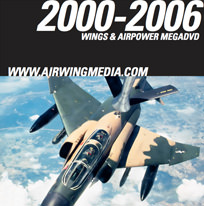Carter Aviation Technologies, LLC is an aerospace research and development firm that has developed and demonstrated new and improved aviation concepts, including its Slowed-Rotor/Compound (“SR/C™”) Technology. SR/C™ Technology couples the speed, range and efficiency of an airplane with the vertical takeoff and landing (“VTOL”) capability of a helicopter and is scalable in size from very small unmanned aerial vehicles (“UAVs”) to large transport aircraft the size of a Boeing 767 equivalent. Whether incorporated into a non-powered rotor (transient hover capable) or a powered rotor (continuous / sustained hover capable) configuration, SR/C Technology offers the same extraordinary benefits during cruise flight in terms of dramatically enhanced speed and range performance.
Smithsonian Channel Features CarterCopter Breakthroughs
The 4-Place PAV is Carter’s current prototype. The configuration currently being tested has a 45’ diameter rotor and wingspan, with a 350 HP turbocharged Lycoming IO-540 engine. The design is for a 2500 lb empty weight capable of jump takeoffs up to 4000 lbs, and rolling takeoffs at a max gross weight of 5000 lbs.
“I know I’m biased, but this aircraft can change aviation. I see this as general aviation, commercial aviation. We can build these aircraft up to a 767 size that can carry 250 passengers. We can combine the best of the fixed wing and the best of a helicopter and the best of a gyro all in one aircraft.” – Carter Aviation President and CEO Jay Carter, Jr.
[raw][slideshow controlnav=”false” directionnav=”true”]
http://www.cartercopters.com/system/gpics/14/full/CCTD4.jpg
http://www.cartercopters.com/system/gpics/15/full/CCTD5.jpg
http://www.cartercopters.com/system/gpics/3/full/CCTD3.jpg
http://www.cartercopters.com/system/gpics/1/full/CCTD1.jpg
http://www.cartercopters.com/system/gpics/2/full/CCTD2.jpg
http://www.cartercopters.com/system/gpics/12/full/Mu2.jpg
[/slideshow][/raw]
[hr4]
The Proof of Concept demonstrator (POC) is flying at a test weight of 3800 lbs. The design is predicted to be capable of 204 mph at full power at 7,500 ft, 214 mph at 12,500 ft or 245 mph at 25,000 ft. The POC has successfully demonstrated the vehicle’s jump takeoff capability, and is currently involved in flight testing to expand the high speed envelope.
The design is very versatile, with several variants around the same basic airframe, maintaining as many common parts as practical. A 200 HP diesel version will have an estimated empty weight of 1800 lbs, and a max gross weight of 3000 lbs.
Some of the noteable accomplishments from the flight testing program include:
- First and only aircraft to achieve ?-1
- Lift/Drag of 7 @ 170 mph – twice as efficient as best pure (non-compound) helicopters
- 150+ flying hours
- 1000+ takeoffs and landings
- Demonstration of zero roll takeoffs & landings
- 10,000 ft altitude
- 173 mph
[image src=”http://www.cartercopters.com/images/copters/heliplane/CH69.jpg?” responsive=”true” lightbox=”true”]
6-9 Place Business Aircraft
Carter has designed a 6-9 place aircraft as a “Next Generation Business Air Vehicle” (BAV) for true point to point travel. This aircraft takes into account lessons learned from the original CarterCopter. The BAV, with a 2000 HP (derated 2500 HP) gas turbine engine, will be fully pressurized, have a top speed between 370 & 405 mph (depending on altitude, and the accuracy of our drag estimates), and be capable of flying at 45,000 ft for 2600 miles with reserves (best altitude for combination of speed, efficiency & range). The entire mast will tilt, allowing for a greater CG range, and to keep the wings at their optimum angle of attack while the aircraft is flying at lower speeds where the rotor is providing more than its minimum lift. Note the restroom in the aft of the cabin, which will enable true non-stop cross-country travel. This aircraft uses many of the same parts as used in the 4-place PAV, such as the rotor, wing, tilting mast, rotor head, auto mechanical rotor pitch control, prerotator drive including 90º gearbox, landing gear, horizontal stabilator mold, and autoflight controls. The 100″ diameter propeller is the same as that used on the original CCTD except it will use four blades instead of two.
For all versions, the aircraft will be capable of both vertical take-offs and short rolling takeoffs, as appropriate based on the density altitude, gross weight, and available horsepower.
Flight Test Videos
[hr4]
For more information…
- Visit CarterCopters.com
- Carter Aviation Technologies Frequently Asked Questions
- Wikipedia: Autogyro
- November 8, 2013 — Carter Aviation Repeats Historic Mark – Breaking the Mu-1 Barrier
- September 26, 2013 — Carter Receives Contract Award for DARPA’s TERN Program
- August 29, 2013 — Carter Personal Air Vehicle Completes First Flights with New Rotor
- April 9, 2013 — Carter Aviation to be Featured in Smithsonian Channel Documentary Scheduled to Premiere on April 20, 2013
- Vertiflite Article — Carter Aviation Featured on Cover of World’s Leading Magazine on Vertical Flight Technology
- April 2013 — Jay Carter to Present at American Helicopter Society International Southwest Chapter Event
- January 2013 — Carter to Present at Upcoming International Specialists’ Meeting on Unmanned Rotorcraft and Network Centric Operations
- December 2012 — Carter’s Slowed-Rotor VTOL Prototype Aircraft Achieving Lift-to-Drag Values 2.5 Times Better Than Helicopters in Ongoing Performance Flight-Testing




